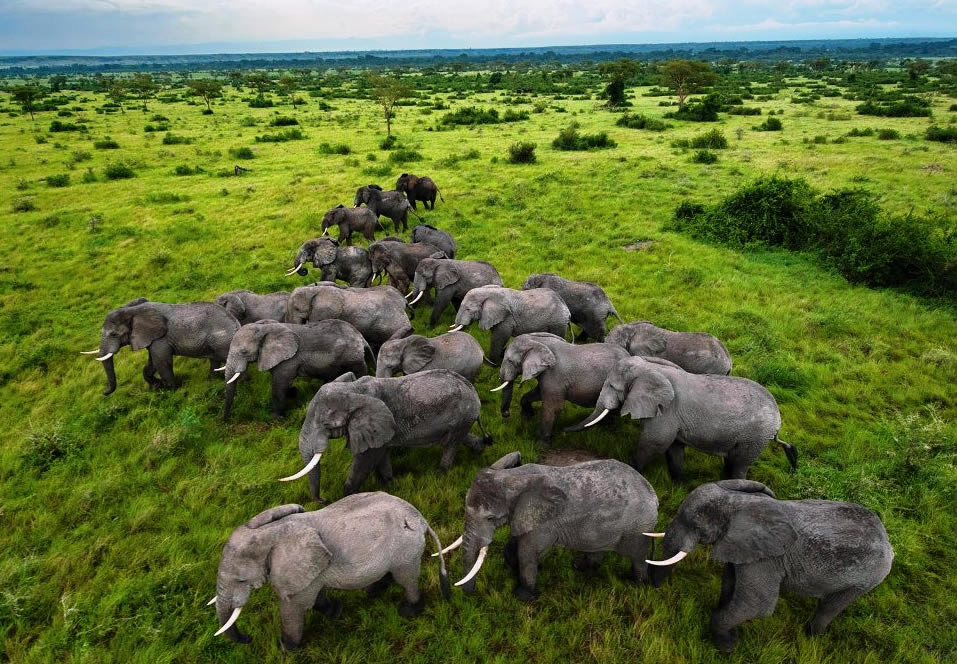Lion Tracking In Queen Elizabeth National Park : Queen Elizabeth national park is known as the second largest national park in uganda and found in the western region in districts of kasese, Rubirizi, kamwenge and Rukungiri. The national park is a home to 95 mammal species plus the big 4 amongst the big 5 mammals. These include buffaloes, elephants and leopard others also include uganda kob, warthogs, waterbucks, bushbucks. Primates such as chimpanzees, black and white colobus monkeys, L’Hoest’s monkey among others. The national park is also a habitat to over 600 bird species such as long created eagle, black belied bustard, white tailed lark, black bee-eater, black-rumped buttonquail, broad-billed roller, palm-nut vulture among others.
Lion tracking is one of the exciting and action packed activity that travelers in uganda can carry out. Queen Elizabeth is known and famous due to the tree climbing lions that are found in the ishasha sector within the southern region of queen Elizabeth national park.
Lion tracking is done in the northern region of the national park in Kasenyi plains and its famous place for game drives due to its large concentration of wildlife species. Lion tracking is an amazing and educative activity where tourists tend to do research about the climbing lions and get to learn how the lions feed and also the importance for conserving the lions for future generations.
Lion tracking is managed by the Uganda carnivore program in partnership with Uganda wildlife authority. The program started as a research program and later opened to the public with an objective of monitoring, research and conserving predator species in Uganda where besides the lions also the hyenas and leopards are part.
Lion tracking experience is has 3 sessions in the day but the most yielding are the morning sessions that begin at 8am and the afternoon. The tracking takes 2 to 3 hours.
HOW TRACKING LIONS IS CONDUCTED
With a team of researchers from the Uganda carnivore program and a Uganda wildlife authority ranger. A radio-caller is required for lions and leopards within the park in order to monitor their movements, territories, risky encounters and their incursions into conflict areas where they find danger of meeting with people plus livestock.

Queen Elizabeth National Park
Tourists are told to look up in the trees as they search for lions within the park because the cats spend sometime relaxing within tree tops in order to escape the heat from the sun within the national park. Lions tend to move in a group of 3 to 25 individuals and these are known as prides but the number increases when tracking them. Thus, tourists are advised to note the numbers seen first to avoid confusion.
The activity is also done in small groups of 4 to 6 members because the tourists are accompanied by a team of researchers and guide and the team can as well be managed.
The male lions have black mane and that helps it to be easily identified from the lionesses. The lionesses don’t have manes but sometimes tend to be stronger than the males because they fight to protect their cabs from being killed by the male.
The tree-climbing lions behave differently within the national park as they make territories and respect the rule and anything can happen between the 2 males of different prides. As they make their territories;
The male rubs its hind feet in the ground about 20cm deep and that’s a sign of ownership.
The king urinates on the tree stems around his territory to protect it from being grabbed by another pride.
The male lion rubs its mane to mark its territory. The mane on the lion is black in colour and the hair is different from the female lion.
All in all, that makes them conquerors and rulers at the same time hence the tittle king of the jungle. This is so because the males don’t want to be interrupted as well.
COST OF LION TRACKING
Lion tracking within queen Elizabeth national park is charged 100 USD per person for both the foreign residents and nonresidents. The east African citizens are charged 100,000 UGX per person. Tourists are told to book their permits earlier at least 6months advance due to the high demand.
The best time to engage in the lion tracking is anytime throughout the year but the best is in the dry months of June to September and December to February. This is because the game drive tracks are passable and animals are clearly seen.
All in all, the lion tracking activity can be accompanied by other activities within the national park such as boat cruise on kazinga channel, game drives, nature walks and chimpanzee trekking in Kyambura gorge among others. This makes the safari memorable and adventurous.
